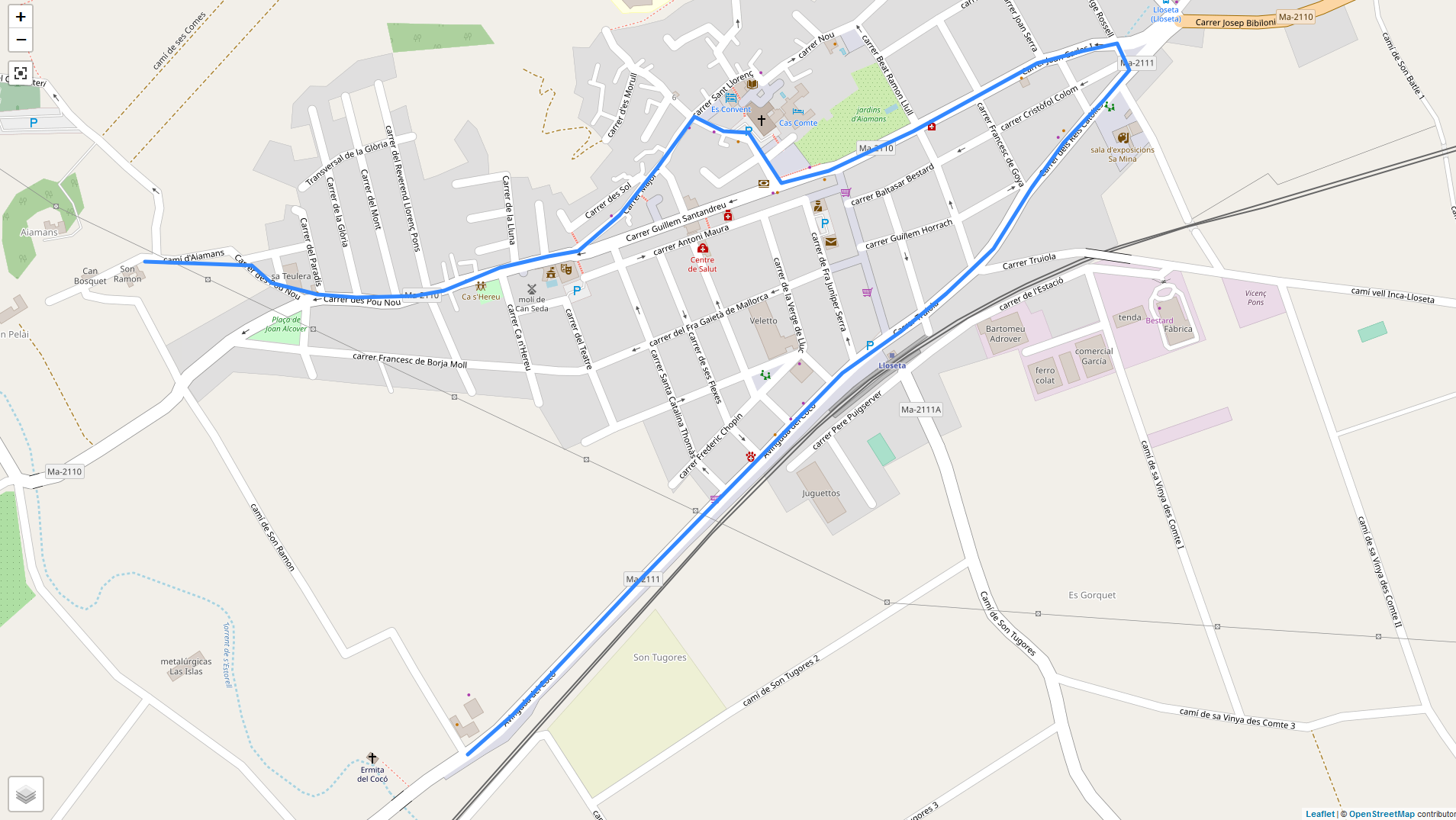Lloseta: the town
Cocó Oratory stands on the Lloseta road from Binissalem and Es Pla. It was built in the 19th century on the site of a cave where, according to legend, a statue of the Virgin Mary was discovered. In Sa Trullola, part of a lignite mine has been restored that operated between 1936 and 1950.
In the town itself, alongside houses built in early 20th century “Noucentista” style, like Can Polla (Can Fuster), examples of traditional architecture can be found, from the stateliest buildings to the most commonplace. Aiamans Palace is one good example of the former. This old estate house, which belonged to Son Tugores and has now been declared an item of cultural interest, was owned by the Count and Countess of Lloseta. Examples of simpler, more common architecture can be found in streets and alleys like Carrer Major, Carrer des Sol and Carrer des Morull. Other houses worthy of mention include Ca s’Hereu, Can Bosquet and Son Pelai in the Aiamans neighbourhood.
The Dry Stone Route GR 221 does not pass through the municipality of Lloseta. All the updated information about this hiking itinerary can be found at https://caminsdepedra.conselldemallorca.cat/ruta-pedra-en-sec-gr-221






